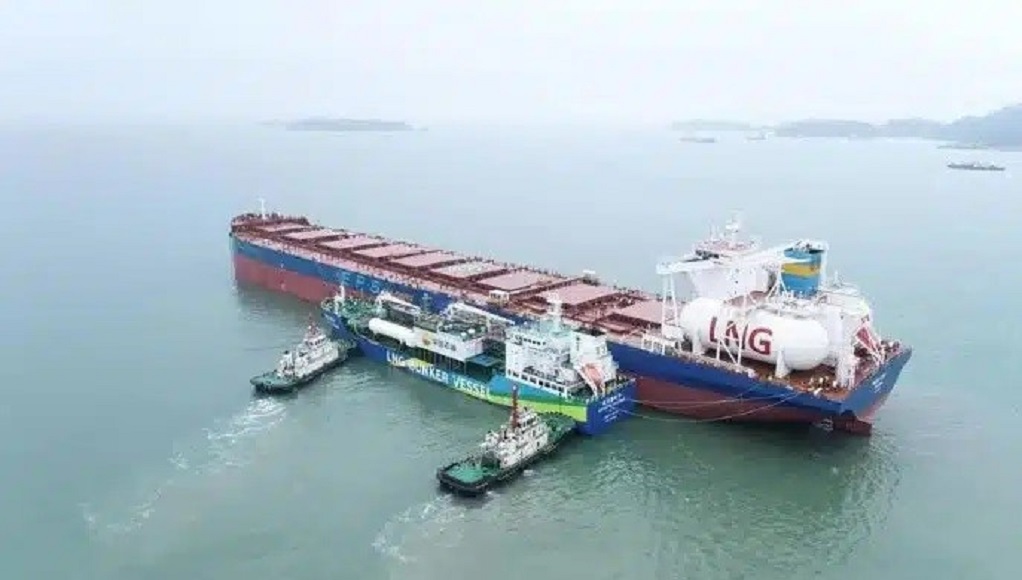Bunker platform ENGINE has compiled a report in partnership with Freight Investor Services in which prices are compared for conventional bunker fuels, LNG and biofuel blends, and then adjusted for calorific contents and potential European Union emission trading scheme (EU ETS) costs into next year.
The authors of the report claimed in a release that with their research they can now approximate true fuel choice costs “more on an apples-to-apples basis”.
The report suggests that Rotterdam looks like an attractive place to bunker LNG for dual-fuel ships that would otherwise have bunkered low-sulphur marine gasoil to consume in emission control areas (ECAs).
While in Singapore, LNG will compete more head-on with very low sulphur fuel oil (VLSFO) to win over dual-fuel vessel customers, and LNG prices look uncompetitive.
Among lower-carbon fuels, B24-VLSFO, a biofuel blend, is attractively priced against LNG with government rebates in place in Rotterdam, but not in unsubsidised Singapore.
From January 1, shipping will be included in the EU ETS. As a result, vessels visiting EU ports will be required to offset their applicable CO2 voyage emissions through the purchase of an equivalent number of EU Allowances (EUAs).
The new regulations were branded as “bullshit” and “a complete waste of effort” by one of Greece’s largest shipowners, George Procopiou, while speaking at an event in Cyprus in October.
Tags: Bunkering, Engine, EU ETs, Freight Investor Services



Recent Posts
IMI Greater Noida Signs MoU with IME (I) to Launch A New Student Chapter
GCMD Completes World’s First Pilot Demonstrating Full Carbon Value Chain from Ship-Captured CO2 in China
NH3 Clean Energy Raises $710,000 to Advance WAH2 Clean Ammonia Project
Coventry University Collaborates with Indian Institutions to Advance Hydrogen Fuel Cell Education
Magenta Mobility partners with MOVER to power sustainable last-mile deliveries across India
Union Home Minister Amit Shah Visits Greenzo Energy’s Green Hydrogen Facility in Sanand
Godrej Enterprises Group (GEG) powers India’s smart, sustainable logistics future
Delhi Expands Electric Bus Fleet with Launch of 100 New DEVi Buses to Boost Green Mobility